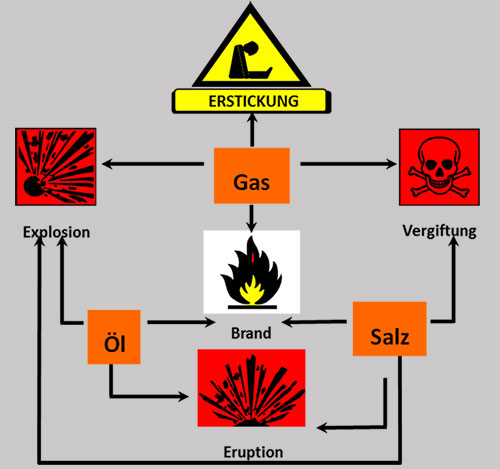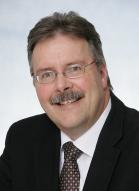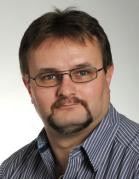Technical Committee 8 Safety in Heat Treatment Plants

Member area AWT FA 8
Access to the new AWT member area from 2020:
Goals and Objectives:
There are many different sources of danger in heat treatment plants. Expert Committee 8 has set itself the goal of dealing with safety-related issues of a technical and organizational nature for AWT members, providing assistance in solving safety-related issues and informing AWT members. Furthermore, developments in new laws and regulations are monitored in order to inform AWT members about important changes or innovations for the industry and to develop action aids for implementation.
The close involvement of both experts and young professionals from the areas of production, plant, operating material and component manufacture and development is an important basis here, so that safety-relevant knowledge can be developed, disseminated and retained.
Each member of the technical committee benefits from the exchange of experience and has the opportunity to expand their own knowledge. A non-binding guest participation is possible at any time.
Next session:
-
May14Technical Committee FA 8 Safety in heat treatment plants
Session FA 8 - Safety in heat treatment plants
Tue, May 14, 2024Current meeting of the AWT technical committee on the subject of occupational and operational safety. Safety-related issues are dealt with and possible improvements are discussed. The meeting is held in compliance with AWT's antitrust regulations.
Seminar of the Technical Committee
Management:

70563 Stuttgart
Leadership Team:


73730 Esslingen

29410 Salzwedel
Publications and information:
Important questions have already been developed in FA 8 and provided in the following FAQ collection:
Question 1: Is there grandfathering for older thermoprocessing equipment?
There is no grandfathering for machinery and equipment. The requirement of the legislator is that work equipment (machines, plants, ...) is operated safely according to the state of the art* (Ordinance on Industrial Safety and Health (BetrSichV) §4 "Basic obligations of the employer", explanations in Bekanntmachungen zur Betriebssicherheit (BekBS) 1114: "Adaptation to the state of the art in the use of work equipment"). Safe operation of older work equipment in accordance with the state of the art may require additional measures of a technical or organizational nature. One measure can be a retrofit, for example.
Excerpt from the Ordinance on Industrial Safety and Health
§2 Definitions
...
(10) The state of the art is the level of development of advanced processes, equipment or methods of operation which makes the practical suitability of a measure or procedure for protecting the health and safety of employees or other persons appear assured. In determining the state of the art, reference shall be made in particular to comparable processes, equipment or methods of operation which have been successfully tested in practice.
Question 2: Does a second valve have to be retrofitted in the process media supply lines on older thermoprocessing equipment?
In most cases, the use of a suitable filter upstream of the first safety shutoff valve is required.
Safety purge gas (such as N2) for purging or pressure maintenance, should be released by two de-energized open valves connected in parallel.
Question 3: How is CE marking done for equipment from multiple manufacturers?
Heat treatment plants regularly consist of machines from different manufacturers, e.g. furnace, handling equipment and exhaust system. In this context, the question of CE marking arises again and again. The legal basis is the EC Machinery Directive 2006/42/EC (in Germany: Machinery Ordinance - 9th Ordinance to the Equipment and Product Safety Act).
In principle, there is only one EC declaration of conformity and CE marking for a machine. However, if several machines interact in terms of production technology, this does not automatically result in a "new" machine" in the technical vocabulary "totality of machines" (interlinked plant, complex plant). An "assembly of machines" is considered as one machine and has to fulfill the same requirements, such as a common EC declaration of conformity and CE marking. The Federal Ministry of Labor and Social Affairs (BMAS) has also included this fact in its interpretation paperon the topic of "Entirety of Machines" of May 5, 2011 and provided assistance for clarification.
According to this paper, a machine is considered to be an assembly if there is a production-related connection due to the following factors
- the arrangement of the individual machines to form a whole (here, particular emphasis is placed on the coherent installation)
- and the individual machines work together as a whole
- and the individual machines are operated as a whole (i.e. have a common control/command device)
and the individual machines function as a whole in terms of safety (safety-related interrelationship).
If all these conditions are met, the machine is considered to be a whole, which has a common EC declaration of conformity and CE marking.
If these machines are purchased and assembled individually by the operator, he is responsible for the declaration of conformity and CE marking of this totality of machines. This can also be commissioned as a service.
However, if it is not an assembly of machines, each individual machine has its own EC Declaration of Conformity and CE marking.
Example: There is a washing machine in a chamber oven line.
- The batches are moved in the oven line by means of a manually operated loader. The washing machine has a control system independent of the other components of the furnace line. There is no signal exchange. A malfunction in the washing machine has no influence on the rest of the kiln line in terms of control and vice versa. There is neither a production-technical nor a safety-technical connection. The lines have separate declarations of conformity and each has its own CE marking.
- The batches are moved in the furnace line by means of an automated loader. The components of the furnace line (e.g. washing machine, ovens, loader, etc.) each have independent controls. A safety-relevant signal exchange takes place. There is a safety-related connection but no production-related connection (no common control), even if a higher-level control coordinates the processes within the oven line. The systems have separate declarations of conformity and each has its own CE marking.
- The batches are moved in the furnace line by means of an automated loader. All components of the furnace line have a common control system.There is both a production-related and safety-related connection. The equipment has a common declaration of conformity and CE marking.
Show figure Decision steps - Entirety of machinery according to Machinery Directive 2006/42/EC (extract from BMAS interpretation paper).
Question 4: Is the replacement of a control system a significant change according to the Machinery Directive and does it require a new CE marking?
In answering the question, it is essentially assumed that the control system has simply been replaced. I.e. the new control has the same functionality as the old control. Important information for the general consideration of whether the change to a system is a significant change in the sense of the Machinery Directive can be found in the interpretation paper on the subject of "Significant change to machinery" from the Federal Ministry of Labor and Social Affairs (BMAS) dated 09 April 2015.
With regard to the replacement of components (including components of the control system), the following statement can be found there:
Excerpt from the interpretation paper"Substantial Modification of Machines"
... The replacement of components of the machine by identical components or components with identical function and identical safety level as well as the installation of protective devices that lead to an increase in the safety level of the machine and that do not enable any additional functions beyond that, Are not considered to be a significant change.
A 1:1 exchange of the control system is therefore not a significant change in the sense of the Machinery Directive.
Example 1: Replacement of Siemens S5 with S7
A typical case is the replacement of an old Siemens S5 control system with an S7. No safety functions may be implemented via a normal PLC. Therefore, the mere exchange against a modern PLC is per se not a significant change, since it does not interfere with the safety technology.
Example 2: Replacement of the entire switchgear
The previous safety technology of the plant, implemented via the switchgear, is sufficient under
consideration of the state of the art.
If a 1:1 replacement is carried out here, this also does not represent a significant change.
Example 3: Replacement of a conventional control system with a control system with safety PLC
The previous conventional control system is replicated 1:1 in a safety PLC.
Due to the 1:1 transfer of the control logic, the safety level is maintained, therefore no significant change is involved.
Example 4: New control system according to the state of the art
The previous safety technology of the plant, implemented via the switchgear, is insufficient, taking into account the state of the art, or is not clearly comprehensible due to missing or incomplete documentation. The safety functions must therefore be implemented in the new control system according to the current state of the art. If necessary, this may involve modifications to the plant itself, e.g. conversion to double valves.
Due to the progress in safety technology, this generally leads to an improvement in the safety of the plant. According to the interpretation paper on the subject of "Substantial Modification of Machinery", an improvement in safety in particular does not constitute a substantial modification within the meaning of the Machinery Directive.
New functions of the thermoprocessing equipment
If new functions are introduced as part of the control system replacement, it must be checked in accordance with the interpretation paper on the subject of "Substantial Modification of Machines" whether these lead to a substantial modification of the thermoprocessing equipment in the sense of the Machinery Directive.
Note:
For thermoprocessing equipment in operation, it must generally be checked whether it is operated safely according to the state of the art. There may be a need for retrofitting here irrespective of a control system replacement.
See also FAQ Question 1: Is older thermoprocessing equipment grandfathered?
Excerpt from the interpretation paper "Substantial Change of Machinery"
...
The replacement of components of the machine by identical components or components with identical function and identical safety level as well as the installation of protective devices which lead to an increase in the safety level of the machine and which, in addition, do not enable any additional functions, are not considered to be a substantial change.
...
Definition: Substantial change in the sense of the Machinery Directive:
A substantial change in the sense of the Machinery Directive requires a new declaration of conformity and CE marking for machines with CE marking and a first-time declaration of conformity and CE marking for older machines without CE marking.
Publication:
Safety aspects of personnel-free periods in hardening stores
Other publications


